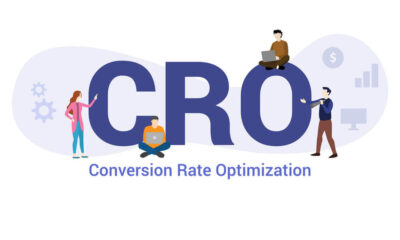Introduction
In today’s fiercely competitive online market, optimizing conversion rates is critical. A frequently underestimated factor that can have a profound effect on conversion rates for coaches is the psychology of effective web design. Delving into how users perceive and engage with your coaching website can guide strategic design choices that not only improve user experience but also drive conversions.
Understanding the psychological triggers that influence user behaviour online can empower you to create a website that resonates deeply with your audience, compelling them to take action and significantly boosting your conversion rates.
Understanding the Psychology of Website Visitors
Website visitors are influenced by a myriad of psychological factors that profoundly shape their behaviour. These factors, including cognitive biases, emotional responses, and decision-making processes, are pivotal in determining how users interact with coaching websites. When designers grasp these elements, they can craft layouts and content that deeply resonate with users, significantly enhancing the likelihood of conversion.
Understanding these psychological nuances allows designers to create a digital environment that feels intuitive, compelling, and aligned with visitors’ needs and preferences, ultimately fostering a sense of trust and connection that is essential for converting visitors into clients.
The Role of Color Psychology in Web Design
Colour psychology is a crucial aspect of web design, significantly impacting how users perceive a coaching website. Colours have the power to evoke various emotions and influence users’ decisions to engage with your coaching services.
For example, warm colours like red, orange, and yellow can create a sense of energy and urgency, while cool colours like blue and green can convey calmness and trust. By carefully selecting the right colour scheme, you can create a visually appealing website that not only attracts users but also encourages them to convert.
Importance of User Experience (UX) Design
User experience (UX) design is all about making sure visitors to your coaching website have a great time. It’s like arranging a comfortable, easy-to-navigate space where they can find what they need without any hassle. When your website is well-designed, it’s easier for visitors to use, and they’re more likely to enjoy their time on your site. This positive experience can lead to higher conversion rates, meaning more visitors will take the action you want them to, like signing up for coaching services or contacting you for more information.
Elements like clear, easy-to-find menus, buttons that stand out and tell visitors what to do next, and a design that adapts to different devices all play a part in creating a user-friendly website. When visitors can easily find what they’re looking for and can navigate your site without any trouble, they’re more likely to stick around and explore further. This not only improves their experience but also increases the chances of them becoming a client.
Leveraging Social Proof for Higher Conversions
Social proof, a compelling psychological phenomenon, occurs when individuals emulate the actions of others in ambiguous situations. For coaches specializing in web design for coaches, integrating testimonials, reviews, and success stories into their websites can establish trust and bolster conversions.
These authentic accounts not only showcase the positive experiences of past clients but also reassure potential clients about the trustworthiness and effectiveness of the coaching services offered. By highlighting real-life successes, coaches can inspire confidence and motivate visitors to take the next step in their coaching journey.
Effective Call-to-Actions (CTAs)
CTAs, or calls to action, play a crucial role in web design by guiding users toward specific actions, like booking a coaching session or subscribing to a newsletter. They serve as signposts, encouraging users to take the next step in their coaching journey. To be effective, CTAs must be compelling, strategically placed, and easy to spot.
Clear, concise language combined with visually distinct design elements helps CTAs stand out, capturing users’ attention and driving conversions. The placement and wording of CTAs are key, ensuring they align with users’ needs and expectations, ultimately leading to higher engagement and conversion rates.
Building Trust Through Design
Trust is essential in converting website visitors into coaching clients. Design elements such as professional branding, client testimonials, and transparent pricing can help build trust with users seeking coaching services. By establishing credibility and reliability, you can alleviate any doubts or concerns potential clients may have, leading to increased conversions.
Mobile Optimization for Increased Conversions
With the rise of mobile browsing, optimizing your coaching website for mobile devices is crucial for conversions. Mobile-responsive design ensures that your coaching website looks and functions seamlessly across different devices, providing a consistent user experience. Mobile optimization can improve engagement, reduce bounce rates, and ultimately increase conversions for coaching services.
Website Speed and its Impact on Conversions
Website speed plays a significant role in user experience and can directly impact conversions for coaching websites. Slow-loading websites frustrate users and can lead to high bounce rates and low conversions. By optimizing your coaching website’s speed through caching, image optimization, and code minification, you can create a faster and more responsive website that encourages users to stay and convert.
A/B Testing and Optimization Techniques
Continuous improvement is key to maximizing conversions for coaching websites. A/B testing allows you to compare two versions of a webpage to determine which one performs better in terms of converting visitors into clients. By testing different design elements, copywriting, and layouts, you can identify what resonates with your coaching audience and optimize your website for higher conversions.
Conclusion
Understanding the psychology behind effective web design for coaches is crucial for maximizing conversions. By leveraging psychological principles, optimizing user experience, and implementing strategic design elements, coaches can create websites that not only attract potential clients but also convert them into paying clients. Implementing these strategies can lead to higher conversion rates, increased client bookings, and ultimately, business success for coaches.
FAQ’s
How does website design impact conversion rates?
Website design plays a crucial role in influencing conversion rates. A well-designed website that is visually appealing, easy to navigate, and offers a seamless user experience can significantly increase conversion rates. On the other hand, a poorly designed website with confusing navigation, slow loading times, and unappealing aesthetics can drive visitors away and result in lower conversion rates.
What are some key principles of colour psychology in web design?
Colour psychology is the study of how colours affect human behaviour and emotions. In web design, colour psychology is used to evoke specific emotions and create a certain mood or atmosphere on a website. For example, warm colours like red, orange, and yellow are often used to convey energy, urgency, and excitement, while cool colours like blue and green can evoke a sense of calmness, trust, and professionalism. Using the right colours in web design can help to attract attention, convey the right message, and influence user behaviour.
How can social proof be incorporated into web design?
Social proof is a powerful tool for building trust and credibility with website visitors. There are several ways to incorporate social proof into web design, including displaying customer testimonials, reviews, ratings, and endorsements from influencers or industry experts. Including social sharing buttons, showcasing user-generated content, and highlighting the number of satisfied customers or clients can also help to build social proof and increase conversions.
Why is mobile optimization important for conversions for coaching websites?
Mobile optimization is crucial for coaching websites, especially those focusing on web design for coaches because an increasing number of people are accessing the internet and browsing websites on their mobile devices. A mobile-optimized website ensures that visitors have a seamless and user-friendly experience on smartphones and tablets, which can lead to higher engagement and conversions. Additionally, Google considers mobile-friendliness as a ranking factor, so a lack of mobile optimization can negatively impact SEO and visibility.
What are some effective A/B testing strategies for conversion optimization?
A/B testing, also known as split testing, is a method used to compare two versions of a webpage or app to determine which one performs better in terms of conversions. Some effective A/B testing strategies for conversion optimization include testing different headlines, CTAs, page layouts, and images to see which variations resonate best with your target audience. It’s important to only test one element at a time and to use statistical analysis to ensure that the results are valid and reliable.
How can website speed affect user experience and conversions?
Website speed plays a significant role in user experience and can have a direct impact on conversions. A slow-loading website can frustrate users and lead to high bounce rates, meaning visitors leave the site without taking any action. On the other hand, a fast-loading website provides a positive user experience and encourages visitors to stay longer and engage with the content, increasing the likelihood of conversion. Additionally, Google considers website speed as a ranking factor, so a slow website may also have lower visibility in search engine results.

 Business2 years ago
Business2 years ago
 Tips & Tricks2 years ago
Tips & Tricks2 years ago
 Law2 years ago
Law2 years ago
 Technology2 years ago
Technology2 years ago
 Business2 years ago
Business2 years ago
 Business1 year ago
Business1 year ago
 Lifestyle2 years ago
Lifestyle2 years ago
 Technology2 years ago
Technology2 years ago















